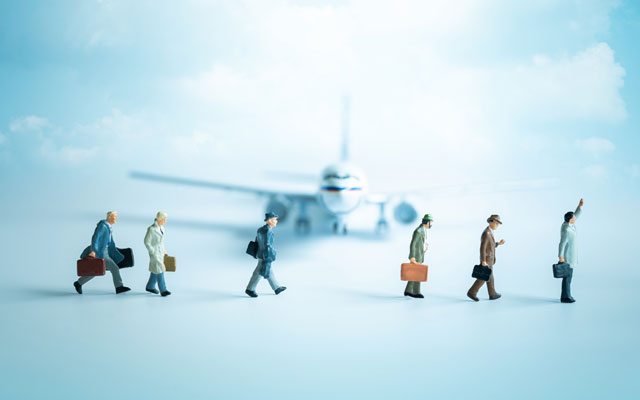- Frameworks and certifications to guide coordinated airline recovery
- Rigid quarantine requirements must go
- Coordinated global approach to safety regulations is critical to facilitate business travel
As the aviation sector readies for take-off again, experts assert that authorities must implement a consistent system of protocols and policies across borders, or the rate of travel recovery will be significantly stifled.

To set a precedent, industry bigwigs have rallied behind the International Civil Aviation Organization’s (ICAO’s) Takeoff: Guidance for Air Travel through the COVID-19 Public Health Crisis, an authoritative and comprehensive framework detailing a series of risk-based measures for air transport operations during the Covid-19 crisis.
Pushing this framework, IATA has joined hands with Airports Council International to develop a manual that can help airports and airlines integrate ICAO’s guidelines into their own operational manuals. IATA is also developing a certification to ensure that aviation players are properly implementing the guidelines.

Conrad Clifford, IATA’s regional vice president for Asia Pacific, said: “(We need to) ensure airlines can safely restart passenger flights in a harmonised manner. The priority now is for governments to facilitate the restart of air connectivity in line with the ICAO guidance and principles.”
He impressed that it is pertinent for “the entire travel and tourism sector to send an aligned message” about the new measures adopted by the industry.
Marco Navarria, global content director, CAPA – Centre for Aviation, agreed: “The most important measure would be for this coordinated intergovernmental approach. Meanwhile, there is in fact some useful interaction among industry bodies like IATA, ACI and WTTC towards producing ground-rules to encourage travellers back into the sky. But so long as governments are unilaterally closing borders, without any consultation, the situation makes for little prospect of sensible progress.”
This situation must be addressed before travel can approach any prospect of recovery. Subhas Menon, director general of the Association of Asia Pacific Airlines (AAPA), added that an united message would “inspire public confidence in air travel”.
He noted: “Each government has imposed its own version of travel bans so much so we are faced with a labyrinthian patchwork of restrictions that suppresses demand and stymies travel confidence. For flights to resume, the most important factor is for governments to mutually agree on favourable conditions to facilitate cross-border travel.”

Evaluate quarantine needs
One of these favourable conditions is reasonable quarantine policies. Even for countries that have reopened their borders, rigid quarantine requirements are a strong barrier to entry, opined experts.
Clifford shared that an analysis has found that 83 per cent of travellers “would not even consider traveling if quarantine measures were imposed at their destination”.
He stressed: “Mandatory quarantine measures stop people from travelling. We urge governments to avoid quarantine measures when reopening their economies.”
The EU has set a good example of this by implementing ICAO’s guidelines to remove travel restrictions and quarantine requirements within union countries. It is also looking at opening its borders to third-party countries that are at a similar or better level of containment of the virus.
Coordinated rebound
The top priority for stimulating corporate travel – which may see quicker recovery than leisure traffic, thanks to fast lanes and relaxed travel restrictions between borders – is coordination and transparency on safety standards and quarantine requirements, said Navarria.
He shared: “While no one has the secret sauce to lure executives back into corporate travel, it is restoring traveller confidence, and not stimulating pricing, that should be the top priority for airlines and our wider industry. Travellers need to know what to expect from the entire travel experience. This will require wide collaboration and coordination to ensure consistent quarantine requirements, airline safety standards, hotel protocols and beyond.”





















